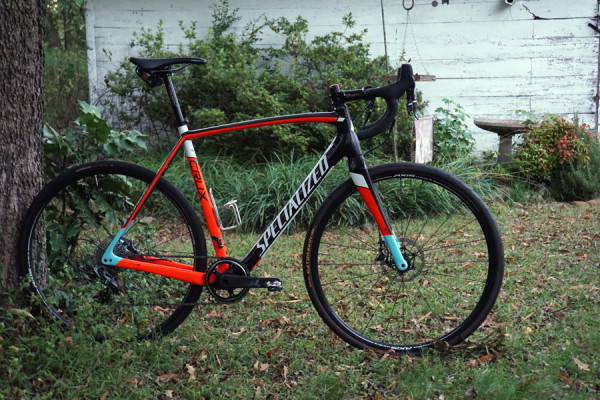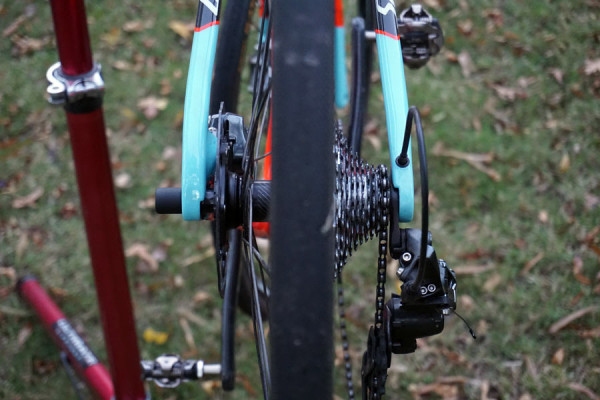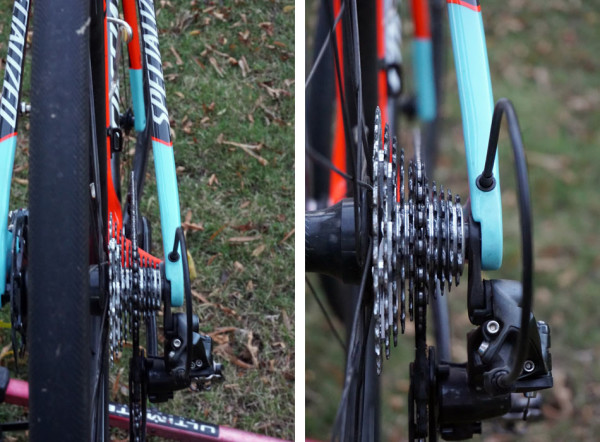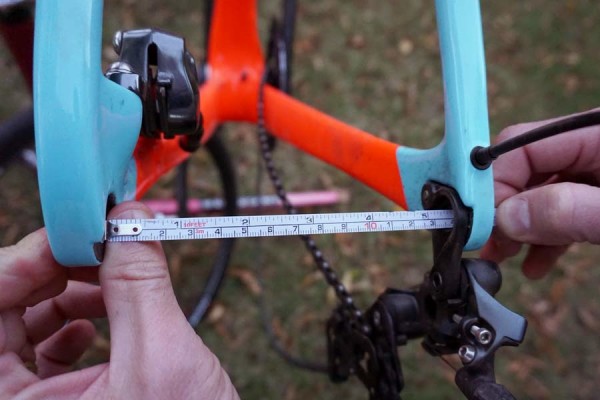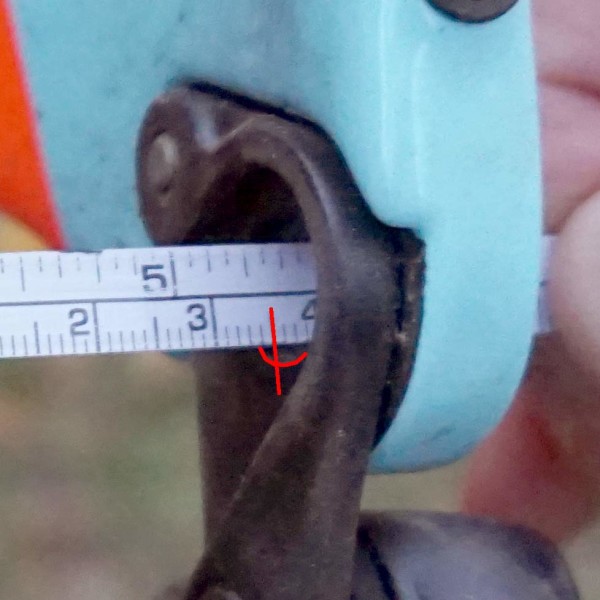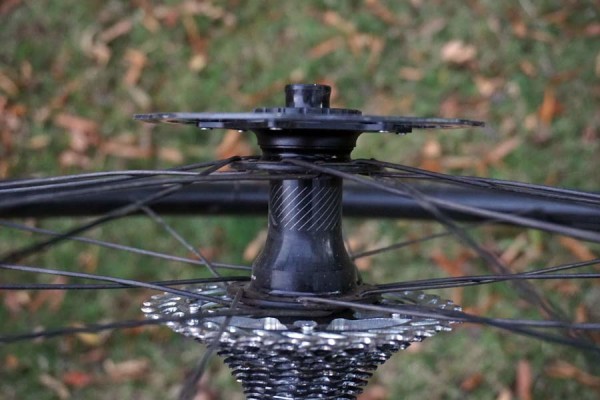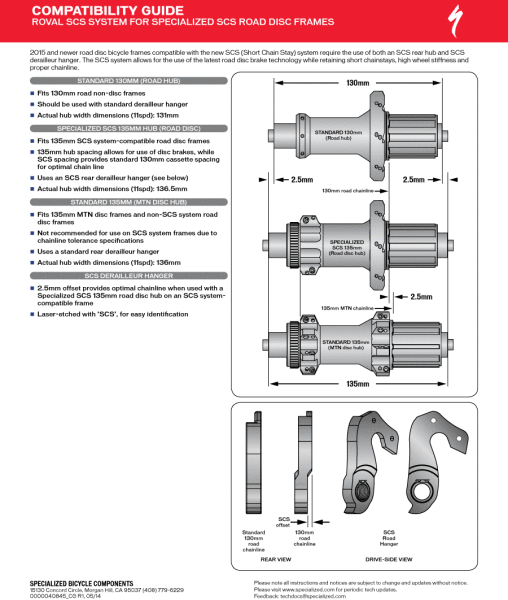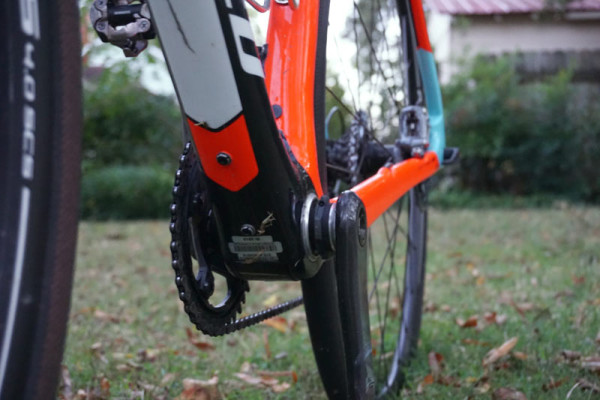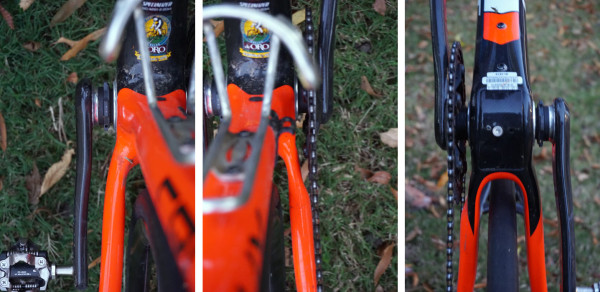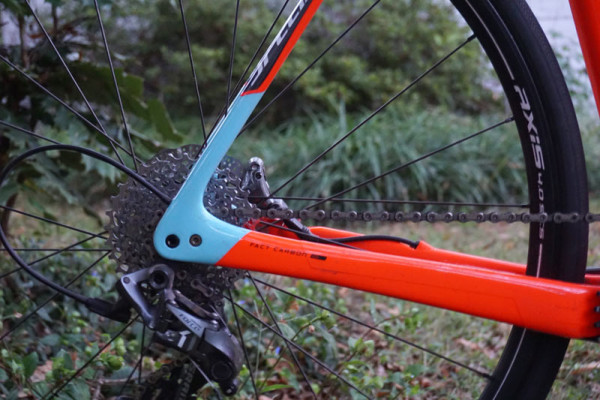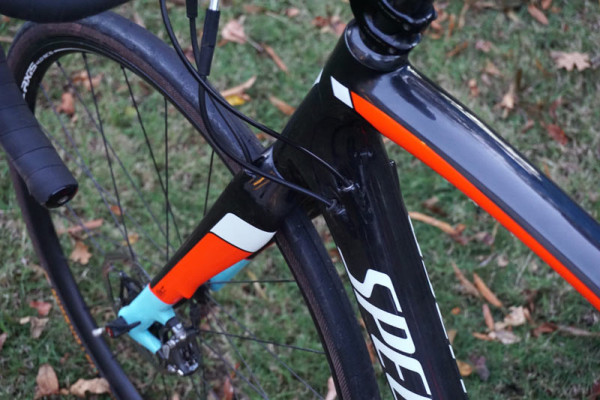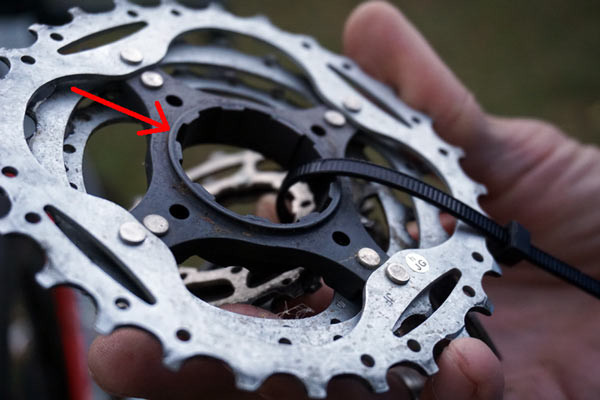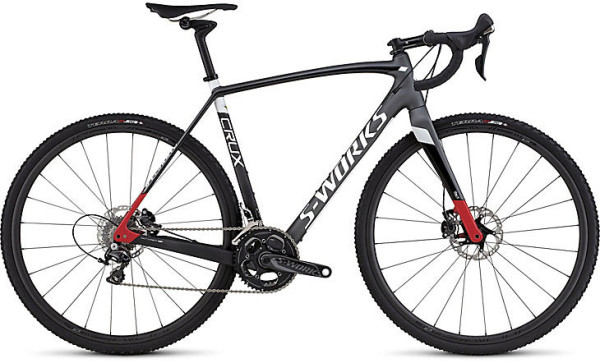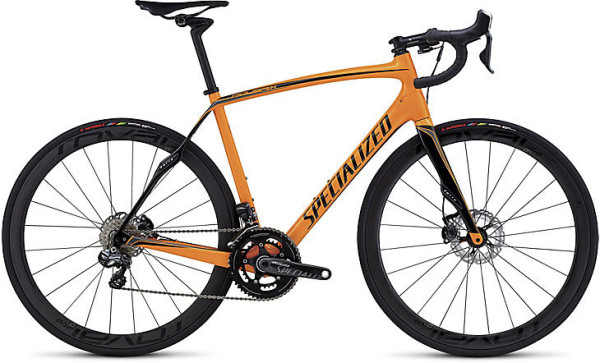For 2016, the Specialized Crux cyclocross bikes get thru axles and disc brakes across the line for all carbon models, alongside other minor frame and fork updates. The Roubaix endurance road bikes get thru axles on carbon bikes from the top down to the SL4 Expert level.
That’s a big update from 2015 models, where all bikes still used standard quick release dropouts on the rear (forks were already thru axle). Generally, thru axles are a good thing, offering a stiffer frame and wheel, and a safer mounting system when used with disc brakes. What’s got some riders in a tiff is the way Specialized went about adding them, creating a proprietary system that locks you into their Roval or Axis wheels…
UPDATE: Read the development story behind the SCS 135mm disc brake thru axles in our interview with Spec’s Road Brand Manager Mark Cote!
The controversy of the design comes from the axle spacing, which remains at a standard 130mm in order to maintain proper chainline and short chainstays. The gap inside the dropouts is 135mm, which accommodates the additional 2.5mm per side required for the slots that the wider thru-axle hub endcaps slot into. The difference is that the 135mm spacing is not the same as 135mm mountain bike spacing (stay with us… the diagram below provides visual comparison and will help make sense of it all).
The design does indeed allow for perfect chainline, for which there are recommended guidelines. Those guidelines prescribe ideal placement for the chainrings in relation to the cassette, with different variances based on how long the chainstays are. For shorter chainstays, there’s less wiggle room in order to maintain proper shifting and prevent the chain from accidentally rubbing the other chainring in a 2x setup.
Specialized runs their narrow 68mm OSBB, and they want short chainstays, so they had to get creative to maintain a good chainline.
The result is SCS (Short Chain Stay) hubs and spacing. For the new thru axle version of SCS, that means a 135mm spacing at the ends of the hubs, which keeps the traditional hub spacing at 130mm. In other words, as far as the cassette’s position on the hub is concerned, this is a 130mm road hub.
For practical purposes, this simply means you’re getting a 130mm disc brake road bike hub on a modern bike…the downside being that most (ie. all) modern disc brake road bikes have switched to 135mm QR rear spacing, which becomes 12×142 with a thru axle. So, with the new Specialized Crux and Roubaix, you’re locked into using their SCS Roval or Axis wheels because no one else makes 135mm thru axle hubs.
If you like their wheels, then no problem. The only downside is the lower bracing angle, which, all else being equal, means wheels that are less laterally stiff. Here’s how they stack up:
Click to enlarge. Note that the cassette is in the same place as on a 130mm road hub, but to get the disc brake rotor in there, the non-drive side flange has to move inboard a bit, reducing the overall bracing angle.
There are some folks attempting work arounds for aftermarket hubs, and we’ll get to those, but first let’s wrap up the bike.
Specialized’s OSBB uses a traditional 68mm road BB spacing, then presses oversized metal fittings into the shell. Bearings are then placed inside those and retained with C-clips, much like a traditional BB30 system. They have a 30mm inside diameter, so a typical BB30 crankset can be used, albeit with spacers between as necessary.
Even with the narrow frame, there’s ample clearance for up to 35mm tires and their accumulated mud.
The thru axle design is sleek, one of the cleanest integrations out there.
The other big change for the bikes is a new carbon fork that runs the front brake hose internally, entering at the top of the crown, then exiting just above the caliper. Post mounts are built in, no flat mount design yet. The axle is the newer 12mm standard, though.
We spoke to several Specialized shop owners and employees, one of which has ridden Specialized ‘cross bikes for years, and one other customer that purchased the bike you see here. Both complimented the bikes on their performance, the shop guy saying that other frame changes were minimal from 2015 to 2016, but that their excellent race handling carries over. But, all expressed disappointment in the thru axle design for various reasons, including:
- It limits your ability to use existing high end wheels, either as primary or pit wheels.
- It locks you into Specialized’s wheel system, unless you’re willing to buy a wheelset and then rebuild them with your own rims.
- The desired chainline could have been accomplished by either using a wider bottom bracket and 12×142 rear thru axles, or using an offset chainring spider or direct mount ring with 12×142, similar to how mountain bikes are moving the chainline out to accommodate Boost 148 rear ends.
- With 1x drivetrains, maintaining ideal chainline for the best front shifting is less important, although we’d add that having incorrect chainline can cause premature drivetrain wear and extra noise.
So, say you want to use your own hubs. Say you’ve got a very nice set of 29er wheels that you’ve been using for ‘cross already and want to fit them to this bike. Sorry, ain’t gonna happen.
Some folks have reportedly tried grinding down the 142mm hub endcaps to squeeze into the Crux’s 135mm spacing. This will not work because the SCS dropouts put the rear derailleur in the wrong spot, and word on the street is they don’t offer a non-SCS dropout.
The one trick that seems to work is machining off the lip on the inside of the cassette to bring it closer to the spokes. This is a) necessary so the cassette ends up far enough inboard that your chain doesn’t rub on the dropouts, and b) definitely not something you have the equipment to do at home. Fortunately, it’s a solution coming from Next Devo, who’s wheels were spotted on Erin Faccone’s bike at some early season races. For $300, Next Devo will custom machine an Ultegra 11-speed cassette and end caps for two sets of wheels (front and rear, four total wheels) that’ll work on their hubs or any modern DT Swiss 350/240/180 hubset. The kit will also fit older Specialized Roval wheels, should you already have a nice set of those and just be looking to purchase a new Crux frameset. Check out the Next Devo adapter kit here.
UPDATE: Hope Tech is also working on a special hubset and wheels due to customer demand. It’ll be based on their XC6 24h hubs with carbon tubular and clincher options. They’re also finishing up their 12mm front axle caps, too. Look for a full story on those as soon as they’re ready.
It’s worth noting that we’ve reached out to Specialized by phone and email on several occasions and have not received a response. If they chime in, we’ll update. It’s also worth noting that this SCS system is used on all thru-axle disc brake versions of the 2016 Roubaix, Diverge, Ruby and Crux bikes.
The Crux line is all disc brakes for 2016, but the alloy bikes come with traditional QR skewers and dropouts. The top of the line is the S-Works, shown above, at $8,500. It’s built with their FACT 11r carbon, Shimano Dura-Ace 2×11 with S-Works carbon cranks, Shimano BR-785 hydraulic disc brakes, Roval Control SL wheels and Terra Pro tubeless-ready 700×33 tires. Two carbon models get SRAM 1×11 drivetrains, the rest are 2×11 Shimano equipped bikes. The top five bikes come with their CR-R suspension seatpost, too.
The 2016 Roubaix lineup includes four carbon models with the SCS thru axle system, others, including several carbon disc brake bikes, get standard QR dropouts and skewers. The top of the line is the $8,500 S-Works SL4 with Dura-Ace Di2 in all black. Immediately below it is this SL4 Pro Disc Race with Ultegra Di2 for $5,800. It gets the BR-785 hydro brakes, Roval Rapide CL 40 carbon wheels with S-Works Turbo 700×26 tires and a Specialized cockpit.
Full specs and pricing on all 2016 models is posted on their website.
